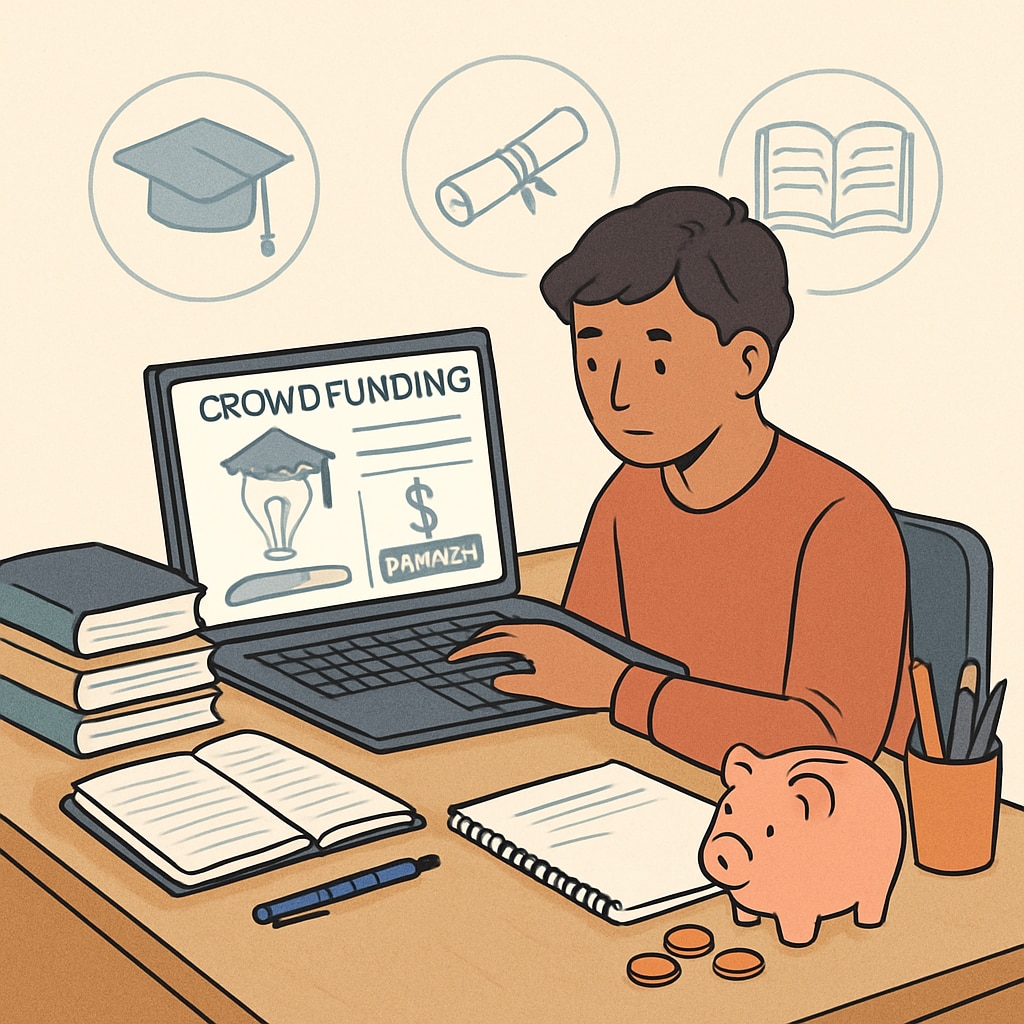Rising tuition costs have created significant barriers for financially disadvantaged students, forcing many to seek alternative solutions. One such solution has gained momentum: crowdfunding. As higher education becomes increasingly expensive, platforms like GoFundMe and Kickstarter are providing a lifeline for students who need financial aid to cover tuition, books, and living expenses. This growing trend raises important questions about the sustainability of crowdfunding as a tool for education funding and its implications for social equity.
Why Are Students Turning to Crowdfunding?
The cost of higher education has skyrocketed over the past few decades. According to data from the Encyclopedia Britannica on higher education, the cost of tuition in the United States has risen by more than 200% since the 1980s, after adjusting for inflation. Scholarships and federal aid programs often fall short, leaving students to face substantial financial gaps. As a result, many are turning to crowdfunding platforms, appealing directly to friends, family, and even strangers for support.
Crowdfunding campaigns typically feature personal stories, highlighting the student’s academic achievements, career aspirations, and the financial struggles they face. By connecting emotionally with potential donors, these campaigns aim to inspire generosity. However, this approach is not without its challenges. Success often depends on the reach of the student’s social network and their ability to market their story effectively, which can perpetuate inequalities among students from different backgrounds.

The Larger Issue: Systemic Inequalities in Education
Crowdfunding, while helpful on an individual level, does not address the systemic issues behind rising education costs. For instance, students from low-income families face greater barriers to accessing quality education, starting as early as the K-12 level. According to Wikipedia on educational inequality, disparities in school funding, resources, and opportunities contribute to long-term disadvantages for these students.
Moreover, relying on crowdfunding as a primary solution raises ethical concerns. Should access to education depend on a student’s ability to craft a compelling online campaign? This approach risks turning education funding into a popularity contest, where those with the most social capital are more likely to succeed. To create a fairer system, society must look beyond crowdfunding and invest in comprehensive reforms that address the root causes of financial hardship among students.

Building a Fairer, More Sustainable Support System
While crowdfunding can provide temporary relief, it is not a long-term solution. Policymakers, educators, and communities must work together to develop a sustainable framework for education funding. Here are some potential strategies:
- Increase Public Investment: Governments can allocate more resources to education, reducing the financial burden on students and their families.
- Expand Scholarships: Expanding need-based and merit-based scholarships can help bridge the gap for financially disadvantaged students.
- Improve K-12 Education: Addressing inequalities in primary and secondary education can prepare students for higher education without additional financial obstacles.
- Promote Financial Literacy: Teaching students and families about budgeting, loans, and financial aid options can empower them to make informed decisions.
In addition, universities and colleges can play a role by controlling tuition hikes and offering flexible payment plans tailored to students’ needs. Collaboration between the public and private sectors can also create innovative funding solutions, such as income-share agreements or employer-sponsored education programs.
Conclusion: The Role of Crowdfunding in Education
While crowdfunding has emerged as a valuable tool for students facing financial hardship, it is not a panacea for the deeper issues within the education system. To ensure that all students have an equal opportunity to pursue their academic dreams, society must address the root causes of educational inequality and invest in sustainable solutions. Crowdfunding can serve as a bridge—but it cannot replace the need for systemic change.
Ultimately, education is a fundamental right, not a privilege. By working together to build a more equitable and accessible education system, we can ensure that no student is left behind due to financial constraints.
Readability guidance: This article uses short paragraphs, lists key points for clarity, and balances active and passive voice. Transition words like “however,” “therefore,” and “in addition” ensure a smooth flow of ideas.


